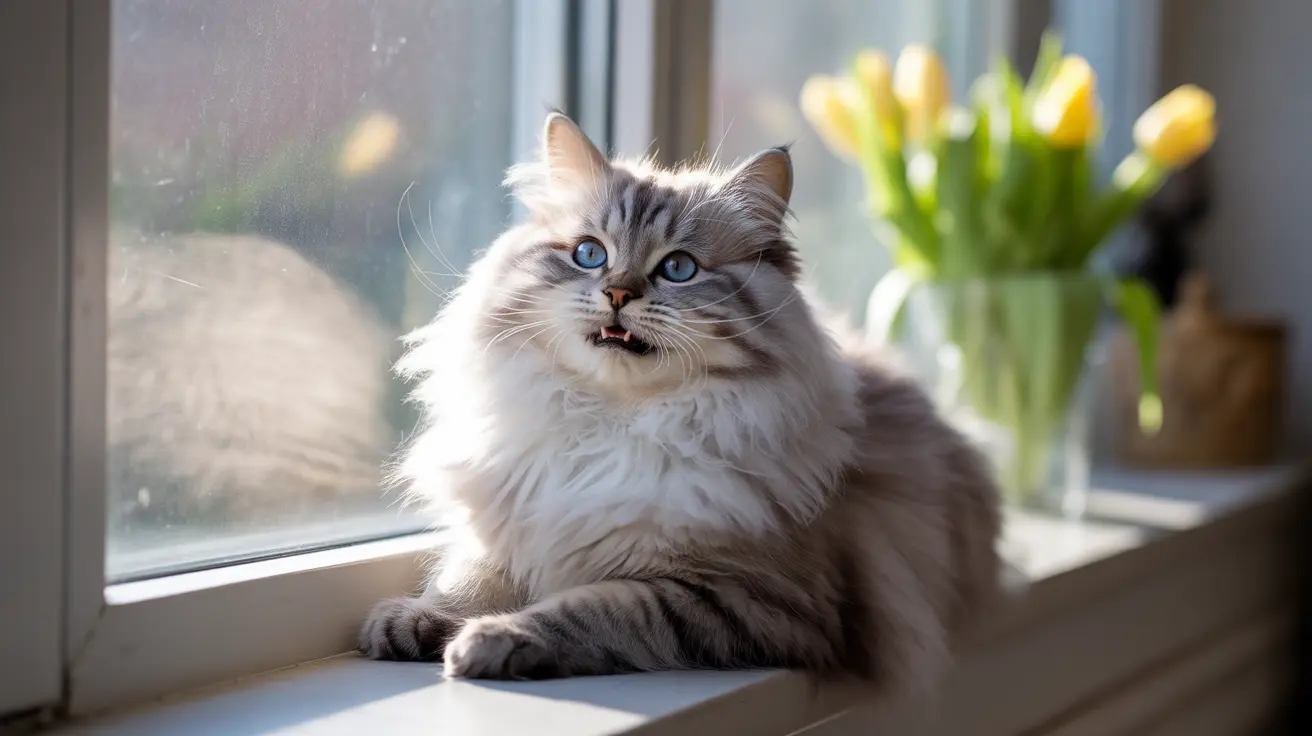Have you ever wondered about that delightful, rolling "mrrp" sound your cat makes? Known as trilling, this unique vocalization is one of the most fascinating ways cats communicate with their human family members and fellow felines. Unlike meows or purrs, cat trilling has special significance in feline communication and often indicates positive emotions.
In this comprehensive guide, we'll explore everything you need to know about cat trilling, from its biological origins to its various meanings and what it reveals about your cat's emotional state.
What Exactly Is Cat Trilling?
Cat trilling is a distinctive vocalization that sounds like a high-pitched, rolling chirrup or "brrrrp" sound. Unlike meowing, which requires an open mouth, trilling occurs with the mouth closed as air passes through the vocal cords. This creates that characteristic vibrating sound that falls somewhere between a purr and a meow.
Think of it as your cat's version of saying "hello" or "hey, look at me!" It's typically brief, lasting only a second or two, but it's packed with meaning and emotion.
The Science Behind Cat Trilling
Trilling is actually an instinctive behavior that begins in kittenhood. Mother cats use trills to communicate with their kittens, encouraging them to follow or pay attention. This early learning experience explains why many adult cats continue to use trilling as a form of social communication throughout their lives.
Research has shown that trilling is one of the most frequently used vocalizations in a cat's repertoire, second only to meowing. Unlike some other cat sounds, trilling is almost exclusively associated with positive emotions and social bonding.
Common Reasons Why Cats Trill
Greeting Behavior
When your cat trills upon seeing you, they're essentially saying "hello!" This greeting behavior is particularly common when cats first spot their favorite humans after a period of separation, even if it's just been a few hours.
Attention-Seeking
Cats often use trilling as a gentle way to request attention or interaction. It's their polite way of saying "excuse me" when they want something from you, whether it's food, playtime, or just some cuddles.
The "Follow Me" Signal
Many cats trill while walking away from their humans, repeatedly looking back. This behavior, often called the "follow me" trill, is a direct invitation for you to come along with them, usually to their food bowl or a favorite play spot.
When to Pay Special Attention to Trilling
While trilling is typically a positive behavior, changes in trilling patterns can sometimes indicate important issues:
- Excessive trilling might indicate heightened anxiety or stress
- Sudden cessation of trilling in a normally vocal cat could signal illness
- Changes in trill pitch or quality might warrant veterinary attention
Responding to Your Cat's Trills
When your cat trills at you, they're initiating social interaction. Responding appropriately can strengthen your bond:
- Acknowledge their greeting with gentle words or pets
- Follow them if they're using the "follow me" trill
- Maintain consistent responses to reinforce positive communication
Frequently Asked Questions
What does it mean when my cat trills at me?
When your cat trills at you, they're usually expressing a positive greeting or trying to get your attention. It's their way of saying "hello" or "notice me" in a friendly, affectionate manner.
How can I tell if cat trilling is a sign of happiness or a request for attention?
Context is key. If your cat trills while making eye contact or approaching you, it's likely a greeting. If they trill and walk away while looking back at you, they probably want you to follow them for something specific.
Why do some cats trill more often than others?
Trilling frequency varies based on personality, early socialization, and learned behavior. Cats who were well-socialized as kittens and those with more outgoing personalities tend to trill more frequently.
Can all cats trill, and what if my cat never trills?
While most cats can physically trill, not all choose to do so. Some cats prefer other forms of communication, and this is completely normal. The absence of trilling doesn't indicate any problems with your cat's health or happiness.
How should I respond when my cat makes a trilling sound?
The best response is to acknowledge your cat's communication. You can speak back softly, offer gentle pets, or follow them if they're trying to lead you somewhere. This reinforces positive communication and strengthens your bond.
Conclusion
Cat trilling is a charming and meaningful form of feline communication that helps strengthen the bond between cats and their human companions. Understanding and responding to your cat's trills can lead to better communication and a deeper connection with your feline friend.






